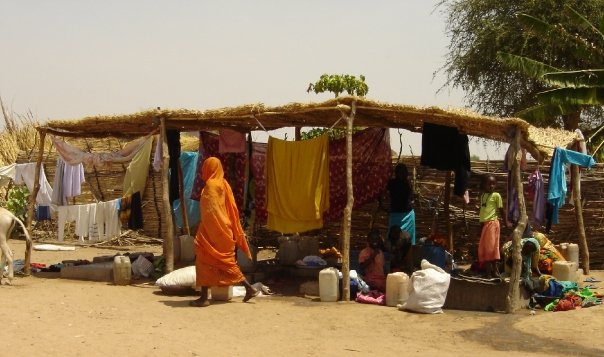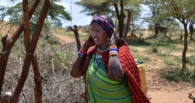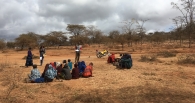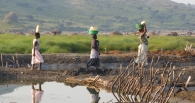Exploring the complex link between climate change and child marriage
Sarah Candy
8 June 2023
/
- 0 Comments
As well as being a Research Officer with Mokoro, Sarah Candy was, until recently, a part-time student at Glasgow Caledonian University, where she was studying for an MSc in Climate Justice. Her final project was about how climate change is impacting on the rates of child marriage.

Young married women often spend their days doing chores instead of attending school. Photo taken by Sarah Candy
Child marriage is a global issue that affects millions of young girls, often confining them to a cycle of poverty, limited opportunities, denied rights and increasing vulnerability. There is a growing interest in climate change as an emerging driver of child marriage. The hypothesis of this master’s thesis was that climate change exacerbates the underlying factors contributing to child marriage, such as poverty and access to primary education, and reduces alternative coping mechanisms. In this article, I touch on the research findings, examining the evidence, complexities, and regional variations surrounding this topic.
A comprehensive analysis of the numerical data, previously published academic research and Twitter data reveals a complex picture. While quantitative data remains inconclusive, there is evidence to suggest that certain countries increasingly affected by climate change, as measured by the intensity and frequency of natural disasters, such as Mali, Niger, and Uganda, are experiencing declining rates of child marriage. Conversely, countries like the Central African Republic, Madagascar, and Sudan, which are increasingly prone to severe natural disasters, are witnessing an increase in child marriage rates. These observations at a national scale are in contrast to stories of the influence of climate-related crises on child marriage at a household level.
Peer-reviewed articles reveal a link between climate crises and increased vulnerability to violence and loss of honour in the aftermath of natural disasters, leading some young women into marriage before 18. Poverty and loss of livelihoods also emerges as a climate change driver of child marriage, particularly affecting rural areas and sub-Saharan countries. The economic pressures of dowry systems place a significant additional pressure to marry. However, it is important to note that different communities have varying responses to economic stressors, leading to diverse coping strategies, some helpful, and some harmful.
The research emphasises that the relationship between climate change and child marriage is context-dependent and cannot be easily generalised. Cultural practices, access to education, and gender inequalities play crucial roles. Bangladesh, for instance, experiences fewer and less severe climate crises nationally compared to three decades ago, yet child marriage rates remain high. Cultural factors and entrenched traditions often outweigh legal mechanisms meant to prevent child marriage.
The research findings suggest that climate change does not directly cause child marriage but acts as an amplifier of existing vulnerabilities within patriarchal societies. Economic stressors and the threat of violence further increase a pressure to marry. Efforts to address this complex issue require a multi-faceted approach, including cultural shifts, improved gender equality, legal enforcement, and community empowerment. Further research is needed to understand the dynamics of child marriage within different cultural contexts and explore alternative coping mechanisms that can break the cycle of climate-induced vulnerabilities and child marriage. By addressing the root causes and promoting social justice, we can strive towards a future where every child can exercise their rights, pursue education, and fulfill their potential.



